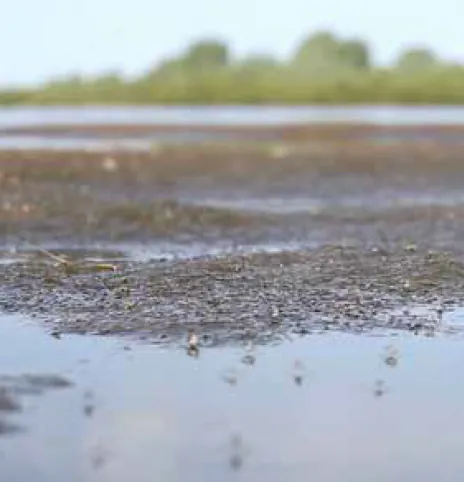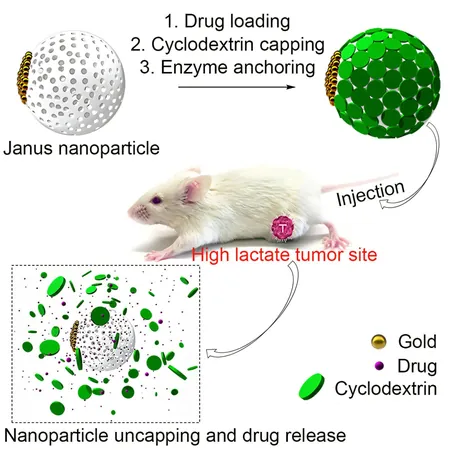
The Alarming Rise of Vector-Borne Diseases in Our Warming World
2025-01-15
Author: Arjun
The Disturbing Impact of VBDs
These diseases, transmitted by vectors like mosquitoes and ticks, account for approximately 17% of all infectious diseases worldwide, claiming over 700,000 lives annually. The relationship between hosts, vectors, and animal reservoirs is intricate and heavily influenced by climate, which is undergoing drastic changes. As the environment transforms, human exposure to disease-carrying vectors is on the rise, leading to concerning increases in diseases like malaria, Zika, and dengue fever. A notable example occurred in Pakistan during the catastrophic flooding of 2023, where malaria cases surged five-fold due to the extensive standing water created by monsoon rains.
How Climate Change Fuels VBDs
Mosquito populations thrive in warm and humid conditions. As temperatures rise, their gestational cycles shorten, enabling female mosquitoes to reproduce more frequently. Each cycle demands a blood meal, which subsequently raises the chances of transmitting lethal pathogens to humans. This accelerated reproductive cycle combined with an extended active season due to rising temperatures means even higher populations of disease-carrying mosquitoes. A alarming projection indicates that the warmer summers expected by 2050 could extend these active seasons for Aedes mosquitoes, the notorious carriers of dengue, Zika, and chikungunya, by an additional month or two.
Warming temperatures are also altering the behavior and ranges of disease-spreading ticks. For example, the ticks responsible for Lyme disease and other infections are displaying increased activity during extended warm seasons, thus heightening the risk of human exposure. As ticks migrate northward, areas previously free of such threats may now face outbreaks.
Animal Reservoirs and Their Role
Many VBDs originate from zoonotic pathogens—those that leap from animals to humans, with wildlife playing central roles in their ecology. Climate change is prompting a mass migration of various animal species, often closer to human settlements. This encroachment can create dangerous intersections between wildlife and communities, elevating the risk of disease spillover. For instance, rodent populations—significant reservoirs for diseases such as hantavirus—may migrate into urban areas due to habitat loss, thus enhancing risk transmission to humans.
Humans at the Crossroads
The connection between climate change and human health grows more complex with each passing day. Urbanization, deforestation, and globalization intensify our interactions with potential disease reservoirs. This escalation not only increases the risk of zoonotic spillover events but also amplifies health disparities, particularly in vulnerable populations. Communities living in poverty are disproportionately affected by extreme weather, leading to food insecurity and exacerbating political and social tensions.
Conclusion: A Call to Action
The reality is stark: climate change threatens to magnify the risks linked to an extensive range of human pathogens. Although we have effective treatments for some VBDs, many remain unaddressed, emphasizing the critical need for prevention strategies. Vaccination campaigns and vector control measures—including education on mosquito repellents and the elimination of standing water—must be prioritized, particularly in low- and middle-income countries.
Moreover, robust public health infrastructure that monitors vector populations and animal reservoirs is essential for early outbreak detection. Finally, we must advocate for significant policy shifts towards renewable energy and sustainable practices to combat the root causes of climate change. While some changes may be unavoidable, proactive measures can prevent tragic repercussions on human health. Stay informed—this fight against climate change and emerging diseases is one we cannot afford to ignore!



 Brasil (PT)
Brasil (PT)
 Canada (EN)
Canada (EN)
 Chile (ES)
Chile (ES)
 Česko (CS)
Česko (CS)
 대한민국 (KO)
대한민국 (KO)
 España (ES)
España (ES)
 France (FR)
France (FR)
 Hong Kong (EN)
Hong Kong (EN)
 Italia (IT)
Italia (IT)
 日本 (JA)
日本 (JA)
 Magyarország (HU)
Magyarország (HU)
 Norge (NO)
Norge (NO)
 Polska (PL)
Polska (PL)
 Schweiz (DE)
Schweiz (DE)
 Singapore (EN)
Singapore (EN)
 Sverige (SV)
Sverige (SV)
 Suomi (FI)
Suomi (FI)
 Türkiye (TR)
Türkiye (TR)
 الإمارات العربية المتحدة (AR)
الإمارات العربية المتحدة (AR)